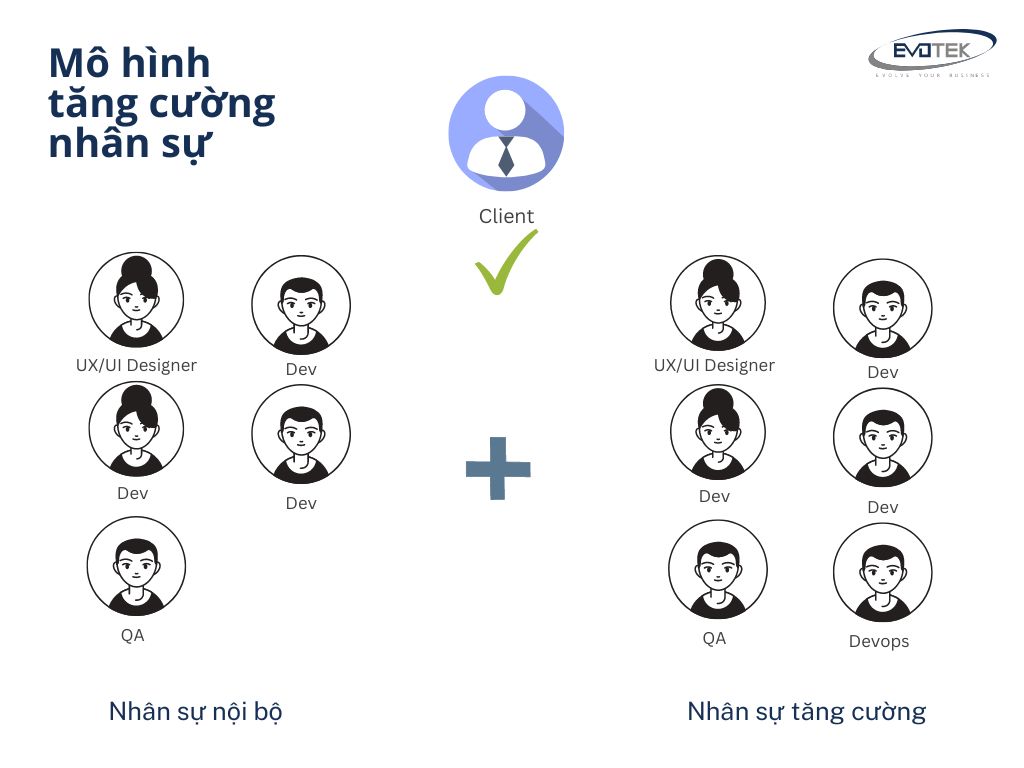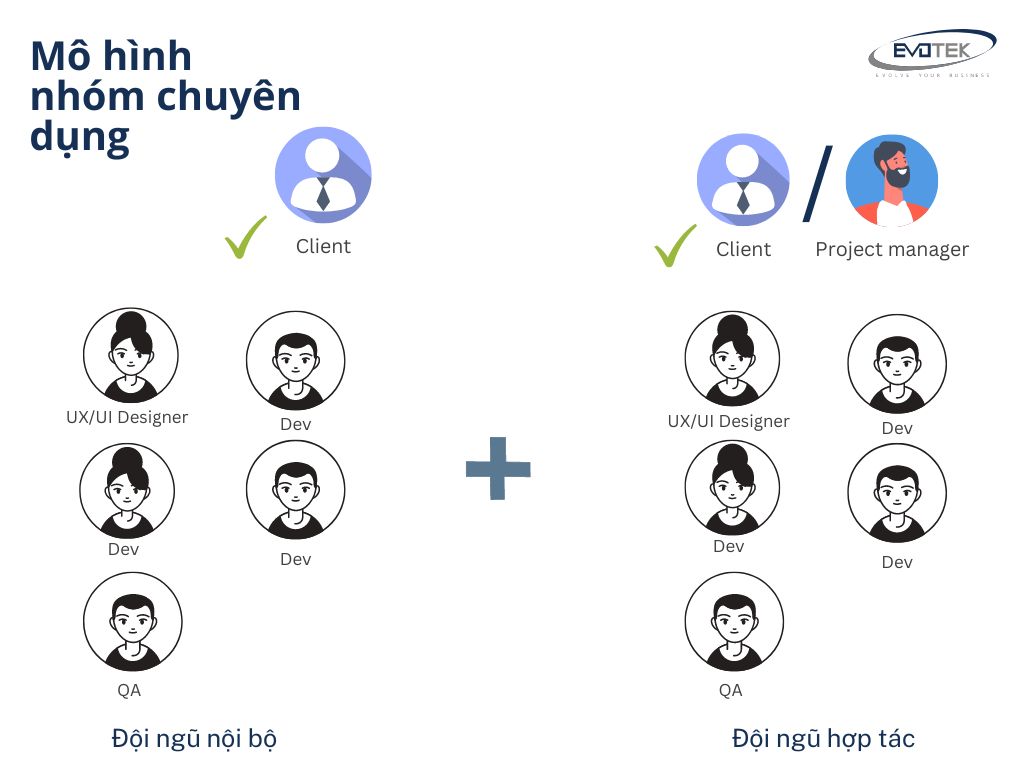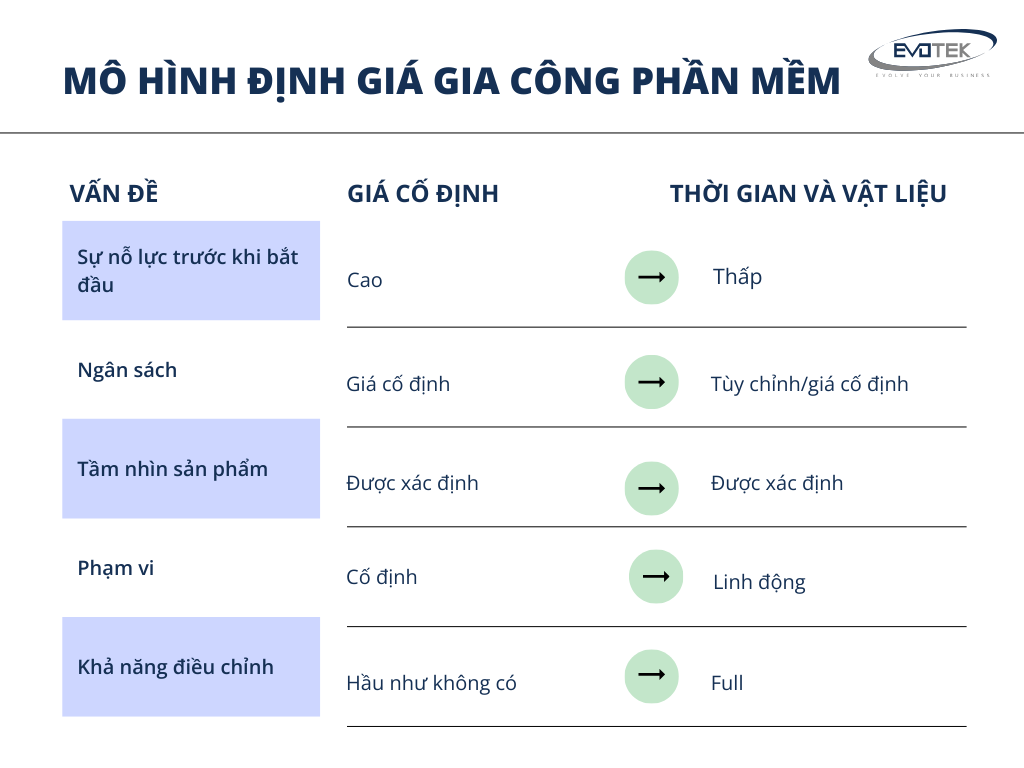Software outsourcing – An inevitable trend of the digital age
As we navigate through the digital era characterized by a proliferation of technological advancements, businesses are increasingly leveraging this landscape to enhance their competitive edge. Within this context, IT software outsourcing has emerged as a predominant strategy.
What precisely is software outsourcing?
In essence, it entails the engagement of external partners to develop software products or manage IT operations on behalf of a business entity. By opting for outsourcing, businesses can redirect their focus towards core competencies while availing themselves of specialized services externally.
This paradigm shift is resonating on a global scale. Projections indicate that the global software outsourcing market is poised to surpass the 400 billion USD mark by 2025. This presents significant opportunities for Vietnamese software firms. Endowed with ample reserves of high-caliber IT talent and offering competitive pricing, software outsourcing is poised to propel Vietnam’s IT sector towards robust growth in the foreseeable future.
Software development outsourcing models
Establishing a software development team from the ground up presents formidable challenges. From recruitment and training to assembling a comprehensive team, this endeavor demands significant investments of time, resources, and finances. Recognizing this, an increasing number of companies are opting for an alternative approach – outsourcing.
Through outsourcing, companies can enlist the services of professional development teams tailored to their specific requirements, effectively executing projects with precision. Leveraging the expertise of dedicated professionals, such teams contribute to heightened efficiency within the organization, allowing internal employees to concentrate on core tasks while the outsourced team focuses on product development.
The degree of involvement, time allocation, and associated costs vary depending on the chosen outsourcing model. Selecting the appropriate model is paramount to fostering effective collaboration, ensuring mutual benefits for all parties involved.
Staff augmentation model
Staff augmentation emerges as a highly efficacious IT outsourcing model, offering substantial advantages to businesses. Under this model, the outsourcing partner furnishes the company with remote employees who contribute to project execution. This approach proves particularly advantageous for businesses familiar with software development or those cognizant of the specific roles their teams lack. Should additional workforce be required to meet organizational objectives, the staffing augmentation model stands as an optimal outsourcing solution.
By leveraging staff augmentation, companies not only mitigate hiring costs but also preserve focus on ongoing tasks without overburdening existing employees. This model flexibly caters to the company’s needs, accommodating both short-term and long-term projects as per requirement.

Advantages:
- Cost Reduction: By bypassing recruitment, training, and development expenses, the staff augmentation model offers significant cost savings to businesses.
- Scalability: Facilitates seamless expansion of the workforce, enabling companies to swiftly adjust to changing project requirements.
- Rapid Integration: Quick integration of remote employees into existing teams streamlines project execution and minimizes downtime.
Disadvantages:
- Training Requirement: Investment in training and familiarization is essential to ensure the new team members align with project objectives and workflows.
- Communication Challenges: Language barriers and time zone disparities may hinder effective collaboration and communication, potentially leading to project delays.
- Project Risks: The company bears the responsibility for managing project risks, including potential setbacks arising from the performance of augmented staff.
In conclusion, while the staff augmentation model presents compelling advantages for technology companies, careful evaluation of its benefits and challenges is imperative prior to adoption. By addressing potential hurdles proactively, businesses can harness the full potential of this outsourcing model to drive efficiency and productivity
The Dedicated Team Model:
Have you ever found yourself brimming with innovative ideas but lacking the resources or manpower to bring them to fruition?
Enter the Dedicated Team Model, also known as the teamwork model,
a quintessential example of software development as a service. In this model, instead of individually hiring team members, companies enlist the services of an entire team of seasoned experts. With no need to delve into the specifics of each team member’s role, clients simply articulate their requirements, leaving the task of assigning responsibilities to the outsourcing partner.
Ideal for enterprises seeking a committed team to autonomously spearhead projects, this model typically comprises diverse professionals adept in various roles, thereby mitigating project risks through shared accountability between clients and partners.
Tailored for long-term projects, the dedicated team model offers paramount control to clients, with the team providing regular progress updates and seeking consultation as necessary. This collaborative approach ensures efficient project execution while empowering clients to retain oversight and steer projects towards success.

Advantages:
- Cost Efficiency: By bypassing recruitment and training expenses, the dedicated team model offers significant cost savings to businesses.
- Scalability: Facilitates seamless expansion of the workforce, enabling companies to swiftly adjust team size according to project requirements.
- Rapid Integration: Quick integration of the dedicated team into existing workflows streamlines project commencement and execution.
- Expertise: Access to a team of dedicated experts ensures high-quality deliverables and specialized skill sets tailored to project needs.
- Project Control: Clients retain control over project direction and decision-making, ensuring alignment with organizational objectives.
Disadvantages:
- Familiarization Time: It may take additional time for the client to acclimate to the dedicated team and establish effective communication channels.
- Communication Challenges: Language barriers and time zone disparities may pose challenges to seamless collaboration and communication.
- Time Intensive: The dedicated team model may require more time compared to some other outsourcing models due to the intricacies of team coordination and project management.
The Project-Based Model
In contrast to the team-based model, the project outsourcing model entails the delegation of a specific, predefined project to a team of specialized experts. This team assumes full responsibility for executing the project from inception to completion, alleviating the burden on the client.
Under this model, the selection of the project team rests with the outsourcing partner, with project risks primarily borne by the outsourcing team. . While seemingly secure, this model is not without its inherent risks. Typically involving fixed payments, project-based models may lack flexibility, potentially leading to additional costs for clients in the event of project complications. Among the three models discussed, the project-based model offers the least room for adjustment
When opting for this model, it is imperative to provide detailed project requirements to mitigate misunderstandings and clearly delineate desired objectives. This model proves optimal for clients with specific needs and a well-defined project vision.

Advantages:
- Project Focus: The dedicated project team focuses solely on the assigned project, ensuring undivided attention and dedication to its successful completion.
- Expert Selection: Project-based models allow for the selection of highly skilled experts specifically tailored to the project requirements, ensuring top-notch deliverables.
- Cost Efficiency: By streamlining project operations, this model can lead to reduced overall project operating costs.
- Risk Allocation: The outsourcing partner assumes primary responsibility for project risks, mitigating risk exposure for the client.
Disadvantages:
- Documentation Requirements: Extensive time and effort are needed to create detailed project documents, increasing the upfront investment in project planning. .
- Time Estimation: Accurate time estimation is crucial for project success, requiring significant upfront effort and resources.
- Development Control: Clients may have limited control over project development compared to other models, potentially impacting project outcomes.
- Communication Challenges: Language barriers and time zone disparities may pose challenges to seamless collaboration and communication.
- Higher Costs: Compared to specialized team models, project-based models may incur higher costs due to fixed payments and additional backup costs for project complications.
- Lack of Flexibility: The fixed nature of project-based models limits flexibility in adjusting project scope or requirements during execution.
Software outsourcing pricing mmodels
Time and Material Model
The time and material pricing model is well-suited for companies with a defined product vision but anticipate the need for modifications during the development phase. It offers a straightforward payment mechanism where clients only pay for completed work.
Under this model, clients retain full control over the project, enabling adjustments to be made as necessary throughout the development lifecycle. Regular updates through daily work reports, timesheets, or weekly review meetings ensure alignment with client expectations at each stage. Transparency between clients and developers is paramount, constituting a foundational element of this model.
Key Considerations:
- Ideal for clients with a clear vision but lacking the technical expertise to execute.
- Flexibility to accommodate changes throughout the project duration.
- Payment is based on actual time and workload, ensuring cost transparency.
- Clients maintain control over project costs, allowing for budget management.
Overall, the time and material model is particularly suitable for projects characterized by evolving requirements and a need for stringent cost control, emphasizing the importance of transparent communication between clients and partners.
Fixed Price Model
The fixed price model offers a convenient payment structure for clients with well-defined project visions. It caters to clients who have meticulously planned their project, considering factors such as budget constraints and estimated costs. Under this model, clients pay a predetermined amount for a specified scope of work and duration.
Typically employed for projects with limited budgets, a clear product vision, and detailed implementation plans such as wireframes, existing documentation, and prototypes, the fixed price model may encounter challenges if project requirements change, potentially leading to additional costs and time.
While suitable for projects with defined parameters, the fixed price model may not be advisable for large, complex projects due to the inherent business dynamics and unforeseen fluctuations. However, with a customer-centric approach and flexibility, it can still be viable even within a constrained budget

Conclusion
When selecting the appropriate outsourcing model for your project, it is crucial to carefully assess your project’s requirements and objectives. If you have a clear vision, try the project-based mmodel. If ideas are vague, use a dedicated team model. If you only need to add more personnel, the staff augmentation model is the appropriate choice.
Key Considerations:
- Hiring a team of dedicated experts will help you save significantly on recruitment costs and simplify the process at the same time. Instead of wasting time finding, interviewing, and training new employees, you will immediately have a highly qualified team ready to start the project.
- With many options for IT outsourcing models, you can easily choose the option that suits the needs and characteristics of the project. You can also choose flexible pricing which allows for better control over costs.
- A team of experts will bring you a deep understanding of the field, as well as dedication and a high sense of responsibility. They are willing to devote themselves to bringing the best results for the company and customers.
Thus, you can focus your resources on other important areas of your business, while being assured that the project will be run by the best people.

 日本語
日本語 한국어
한국어 Tiếng Việt
Tiếng Việt 简体中文
简体中文